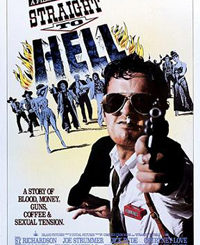 This is Orson Welles
This is Orson Welles
by Orson Welles & Peter Bogdanovich (Da Capo Press)
by William Ham
In the pantheon of American film director/historians, Peter Bogdanovich is second perhaps only to Martin Scorsese in terms of passion, erudition, and scholarship. The major difference between the two is that Scorsese, first and foremost, worships the intoxicatory and transformative nature of film itself, whereas Bogdanovich’s troth is more focused on the oversized, blustering personalities that stood behind the camera, now-mythic celluloid entities like John Ford, Howard Hawks, Alfred Hitchcock, and, most of all, the subject of this book. It may not have done much for his art (Scorsese continues to fuse his love of movie technique and the understanding of how it illuminates the best and worst parts of the human spirit to make pictures that, even when not entirely successful, still ring out with skill and artistry; Bogdanovich overcame promising beginnings to churn out faceless hackwork like The Thing Called Love and, ahem, To Sir With Love 2, a more noteworthy figure for his tragicomic romantic dalliances than for any of the work he’s produced in the last two decades), but it has given him the opportunity to tag along with some of cinema’s greatest artists and occasionally even goad them gently into invaluable discussions of their life, work, and philosophy. This Is Orson Welles, an oral history constructed from several conversations between the two in the late sixties and early seventies (around the time of Bogdanovich’s crowning success,The Last Picture Show, and well after everyone but cineastes had written Welles off [incorrectly] as a megalomaniacal control freak and troublemaker who never bothered to finish his own films), is a delightful and educational tribute to one of the few artists of this century who could truly be called a genius, a first-person primer of some erratic, brilliant, and largely forgotten work, and a remarkable picture of a man who tasted great success early on but crashed quickly on the rocks of notoriety and poor timing and never fully recovered.
To many of us, Orson Welles is best known for three things: War of the Worlds, Citizen Kane, and as a (barely) walking fat joke during the last few years of his life. An unfortunate state of affairs, indeed, which stems from his daring and audacious youth: amazingly, the twenty-five-year-old Welles was given total creative control for his very first feature, yet used that freedom to make an enemy of one of the most powerful people in America, newspaper czar William Randolph Hearst (that someone in the print media could wield such influence just goes to show how long ago this all was). The assumption that Kane was “about” Hearst was both flat-out wrong and dead-on right: Welles feigned ignorance time and again, and for years kept pointing out illustrative differences between the two, and yet tucked a number of nasty in-jokes into the film (the best one: “Rosebud” was Hearst’s nickname for his mistress’ clitoris!) and here proclaims that Hearst was “dead right” to have been so offended, which amazes one to read: in spite of the irreparable damage the Hearst brouhaha caused his career – never again was Welles able to finance, direct, and cut his own pictures so easily – the man carried nary a trace of bitterness or recrimination about his long, hard journey beneath the consciousness of Hollywood, even with a career studded with tragedies, losses and setbacks that would drive lesser artists to despair. (Two of the most horrifying occurred simultaneously: the tragic hacking to death of Welles’ second [and many say superior] film,The Magnificent Ambersons, which was performed while Welles struggled to direct the never-completed It’s All True in Rio, a film he neither wanted to make nor was paid for. The rumors and half-truths that resulted from these incidents destroyed his Hollywood reputation forever.) Throughout, Welles comes across as the best possible kind of auteur – a quixotic man of modesty and good humor (his ability to deflate his interlocutor’s pretentious with a well-aimed quip is glorious to behold), with no compunctions about taking acting, writing, and narrating jobs in frankly embarrassing works if it helped him get his own works finished (though, sadly, many never were by the time of his 1985 death), no illusions about the artist being more important than the art, and no lack of brilliance in wriggling out of setbacks like the magician that he was. As a repository of anecdotes, technical explanations, and endless and revealing opinions, this book beats the extra audio track commentaries of a thousand DVDs and, hopefully, will drive those of us who consider themselves “film buffs” but who have no recollection of movies pre-Roger Corman to the cobwebby shelves of their local video outlets to rediscover this great man’s neglected work. For this alone I can forgive Bogdanovich the “director’s cut” of They All Laughed.



